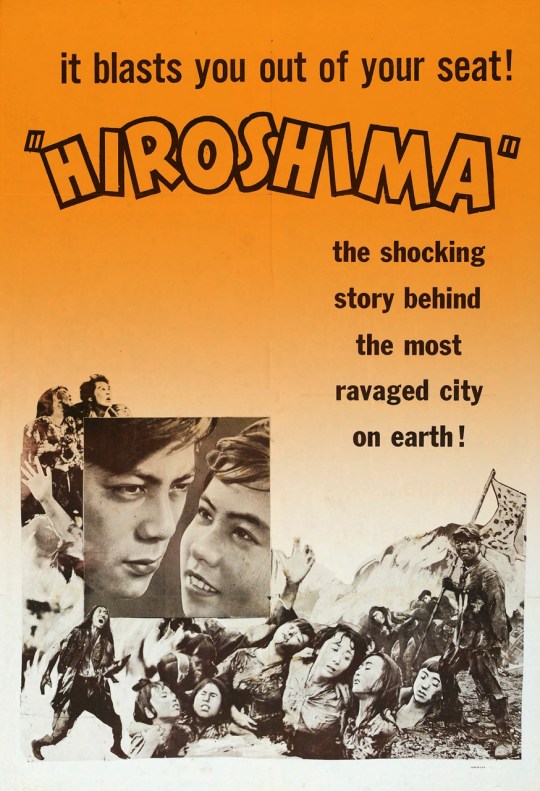#sekigawa hideo
Text

Chizuko Arai with Kikko Matsuoka - Hideo Sekigaw
3 notes
·
View notes
Text


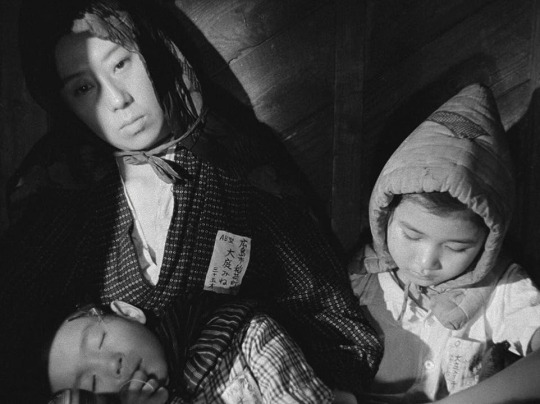

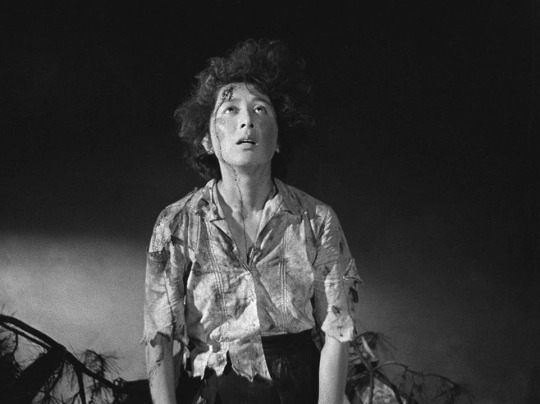


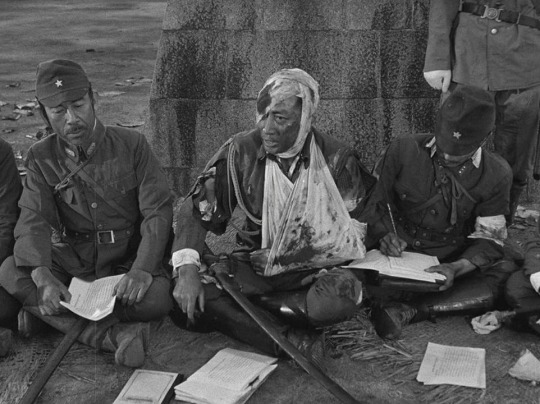

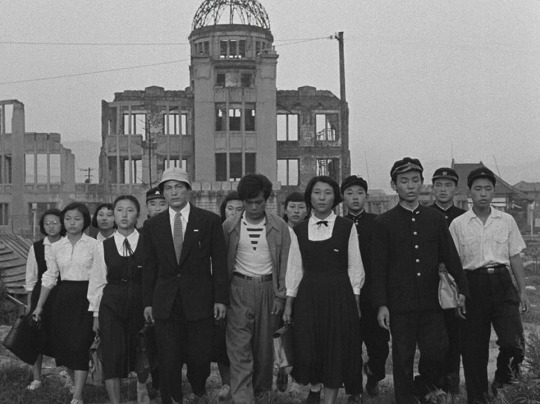
Hiroshima (1953)
Dir. Hideo Sekigawa
#Hiroshima#japan#japanese film#film#movie#wwii#hideo sekigawa#atomic bomb#war#nagasaki#Isuzu yamada#eiji okada#yoshi kato
7 notes
·
View notes
Text
Children of Hiroshima: The Foundation for Hibakusha Cinema
A criticism Oppenheimer faces is it fails to showcase a Japanese perspective on the bomb. We as critics should take it upon ourselves to highlight such works. With that, here is a review of Children of Hisoshima, an early work from Kaneto Shindō. Enjoy!
There’s a popular misconception that Gojira, Ishiro Honda’s kaiju masterpiece, was the first Japanese film meant to be an aesthetic reaction and articulation of the bombings of Hiroshima and Nagasaki and therefore nuclear anxieties. While true that it was one of the first films made by Japanese filmmakers after the post-war American occupation which forbade depictions of the bombings, it would be…

View On WordPress
#Akira Ifukube#Arata Osada#Children of Hiroshima#Children of the Atomic Bomb#Classic Releases#Drama#Film Reviews#Gojira#hibakusha cinema#Hideo Sekigawa#Hiroshima#History#Ishiro Honda#Japan Teachers Union#Kaneto Shindō#Kuroneko#Miwa Saitō#Nobuko Otowa#Onibaba#Osamu Takizawa#Takashi Itō#Takeo Itô#Zenju Imaizumi
0 notes
Note
right but a lot of the criticism i’ve seen of oppenheimer isn’t that the movie oppenheimer isn’t about the victims but that a movie about oppenheimer & not the victims is what got made
I have definitely seen both of those criticisms. And while there’s merit to ask for films about the victims of the atomic bombings - that’s just the thing. There are films about the victims of the bombs. Many, many films (not to say there can’t be more made today - but to act like this narrative has never been addressed is false). Several of them Japanese films - which I would argue is the crucial POV for comprehending a tragedy that happened in Japan. An American film made by American people is not really the film to be evaluating how the Japanese experienced the atomic bombs. Does that mean a film can’t be made by Americans? Of course not. But one would hope there would be voices consulted and researched.
But to say that there can’t be a film about the man who directly led to the tragedy itself is a bad faith argument. There’s absolutely no reason both stories can’t be told. What would be a mistake would be if Oppenheimer was this big grand-standing story that made everyone who created the bomb look like a hero - the thing people are accusing this film of being. But that’s not what the film is. It’s a character study on a very complex historical figure. It is not glorifying him or the tragedy or the war. And it directly not showing the repercussions on others is both the point and lets the film escape any exploitativeness.
I’m not claiming to be an expert on this entire historical event, but it is very clear to me that saying this film shouldn’t exist is not even trying to engage with the text. Two things can exist. If people feel so strongly about having a narrative on both ends, then they should be talking about films that do talk about the bombings impact, not saying this one film is somehow taking away from the other conversation.
Nolan is not making a story about the victims, and he never claimed to be doing so. He does not have to tell that story either, especially when he probably isn’t the right person to do so.
If anything, the people asking about a film directly about the victims in Los Alamos is a better argument. There is definitely a story to be told there and I would encourage one to be told. However, just because that’s not what Oppenheimer is about doesn’t mean it is somehow morally corrupt or a bad film for that reason. Historical films are easily picked apart because they can always address more, and there are some historical films that get facts wrong in a genuine needs-to-be-fact-checked way, sometimes with intent to avoid controversy and other times to contribute to a narrative being shaped. But it’s also relevant to acknowledge that the focus of Oppenheimer is not the bomb. Or its impacts. Critique the film on its historical shortcomings if need be (I wouldn’t be the person to know all of that in detail), that’s all well and dandy. But this film on its own is a very focused lens idea, not the broad one.
Anyway:
• Hiroshima (1953) dir. Hideo Sekigawa
• Black Rain (1989) dir. Shôhei Imamura
• Barefoot Gen (1983) dir. Mori Masaki (I believe the original manga has many adaptations, but this was the first)
• Rhapsody in August (1991) dir. Akira Kurosawa
• Children of Hiroshima (1952) dir. Kaneto Shindō
• Hiroshima Mon Amour (1959) dir. Alain Resnais
and common misconception that Grave of the Fireflies (1988) dir. Isao Takahata is about the atomic bombings - it’s more about the overall carpet bombings and the toll of WWII in general
hell - the entire kaiju genre is birthed from the artistic response to the atomic bombings : Godzilla (1954) dir. Ishirō Honda
^ these are just some I’ve heard of through my own knowledge / looking some up. can’t attest to their quality - but films like this do exist
33 notes
·
View notes
Photo


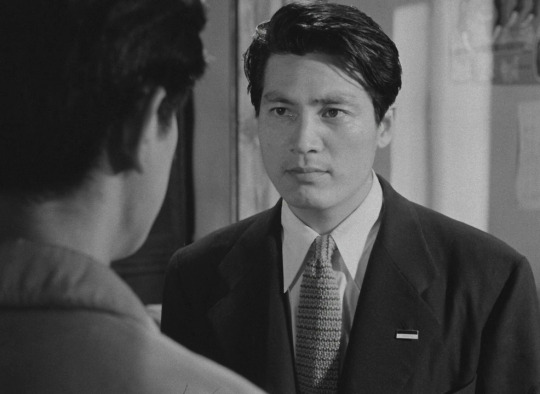



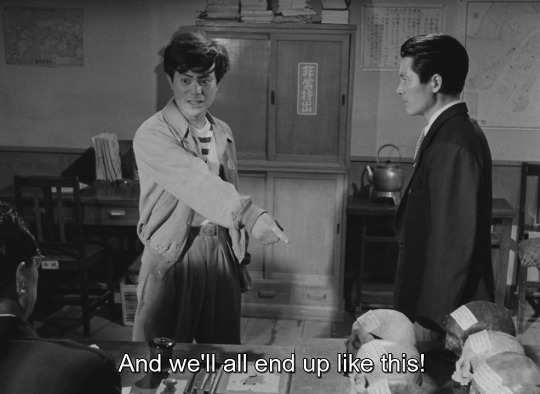

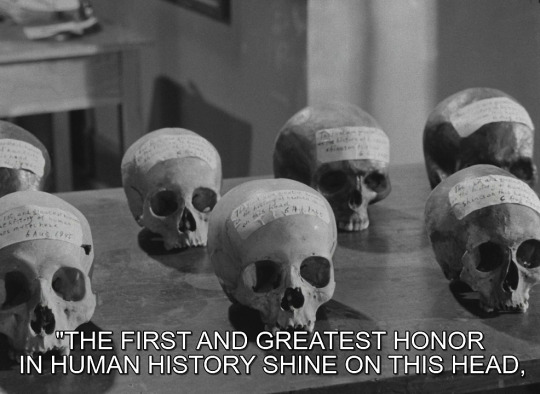
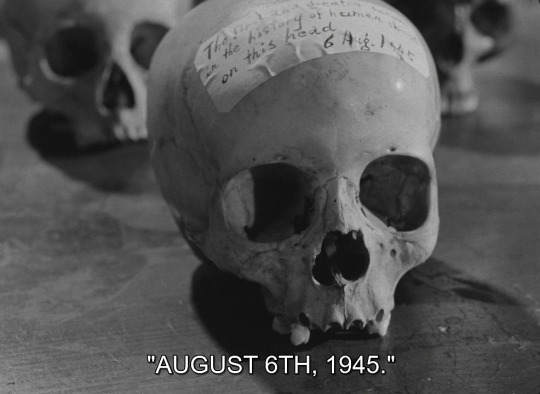
Hiroshima (Hideo Sekigawa, 1953).
#hiroshima (1953)#hiroshima#hideo sekigawa#yasutarô yagi#eiji okada#shunichirô nakao#susumu urashima#akikazu kôno
59 notes
·
View notes
Photo
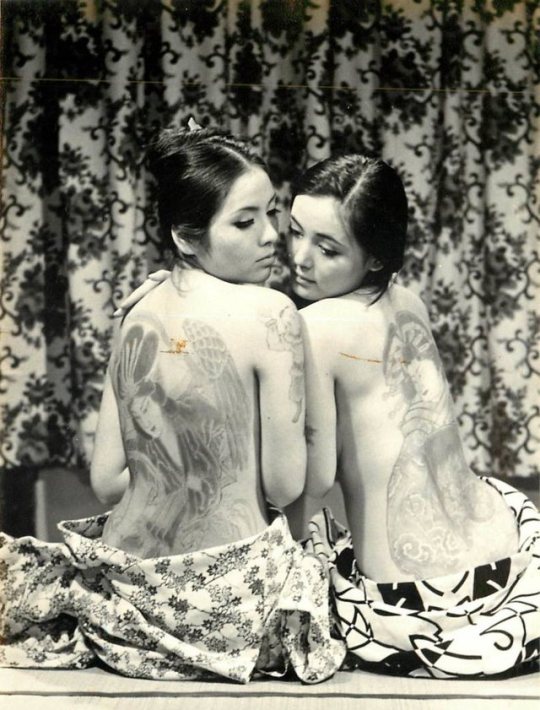
(via JHALAL DRUT: いれずみ無残 - 1968)
66 notes
·
View notes
Photo
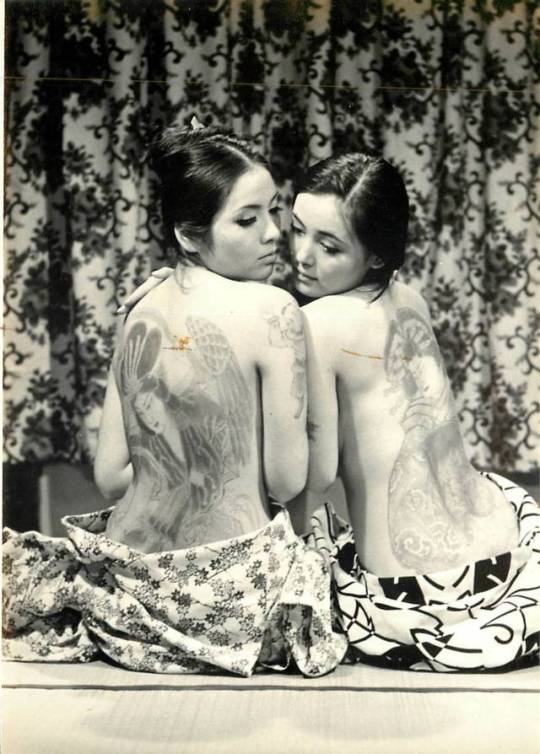
Press photo for Tattooed Temptress (Irezumi Muzan, いれずみ無残), 1968, directed by Hideo Sekigawa (関川秀雄) and starring Chizuko Arai (荒井千津子) and Kikko Matsuoka (松岡きっこ).
#Chizuko Arai#Kikko Matsuoka#Tattooed Temptress#Hideo Sekigawa#Irezumi Muzan#いれずみ無残#関川秀雄#荒井千津子#松岡きっこ#Press Photo#Shochiku
860 notes
·
View notes
Text
The Atomic Bomb on Film: Remembering Hiroshima By Kim Luperi

Filmmakers take a position in the way they showcase their subject, especially when confronting the horrors of war and national tragedy. One such event that Japanese cinema has grappled with for decades is the atomic bombing of Hiroshima in August 1945, which, along with the bombing of Nagasaki three days later, took the lives of over 200,000 people and hastened the end of WWII.
Two of the first Japanese films to show the attack on Hiroshima and its aftermath were CHILDREN OF HIROSHIMA (’52) and HIROSHIMA (’53), and I was intrigued that both pictures were commissioned by the Japanese Teachers’ Union (JTU), based upon the same book and produced in quick succession. But how come it took seven years for filmmakers to address the bombing? Well, following Japan’s surrender in 1945 came the American occupation, which shifted the Japanese film industry from wartime propaganda to occupied propaganda. Among the suppressed subjects were the atomic bomb and nuclear warfare, partly for fear that showing the Japanese people the real destruction and suffering the bombs caused “would sway public opinion against the U.S.,” Matthew Edwards explained in The Atomic Bomb in Japanese Cinema: Critical Essays. Only when the occupied forces left Japan in April 1952 were filmmakers free to explore defining wartime events through a cinematic lens.

The story of these two adaptations begins with the JTU’s insistence that the bombing of Hiroshima be documented and shared widely. As explored in Kazu Watanabe’s illuminating Criterion.com article “A Tale of Two Hiroshimas,” one reason the JTU ardently pushed the subject was because many teachers felt complicit in disseminating a wartime philosophy that led students to their deaths. That awakening gave way to the slogan, “Never send our students to the battlefield again.”
With that, the JTU contacted director Kaneto Shindô, a Hiroshima native, to adapt Children of the Atom Bomb, Arata Osada’s 1951 collection of essays by young bombing survivors. Cameras began rolling on the adaptation, CHILDREN OF HIROSHIMA, a mere month after the occupation ended. The movie centers around a schoolteacher, Takako Ishikawa (Nobuko Otowa), who returns to Hiroshima years after her mother, father and sister died in the bombing. There she visits with former students and witnesses many of the enduring hardships citizens live with daily.
CHILDREN OF HIROSHIMA combines documentary-style realism and melodramatic flourishes that frame the survivors’ palpable sense of grief, determination and precarious hopefulness. In choosing a protagonist who is a victim herself but also detached from the reality of day-to-day life in Hiroshima, Shindô provides survivors and outsiders a window into which they can identify with the painful effects of this horrific event.
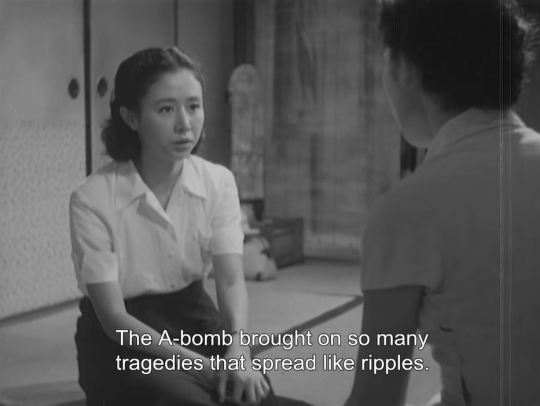
Despite a positive reception internationally that included a screening at the Cannes Film Festival and peace-related awards from the likes of the British Film Academy, the film was “promptly dismissed” by the JTU “as largely ineffectual,” according to Mick Broderick and Junko Hatori’s essay in The Atomic Bomb in Japanese Cinema. In the preface for Children of the Atom Bomb, Arata described the kids’ stories as "outrage against the war that took their beloved family members from them; and a heart-rending prayer and call for peace,” and though CHILDREN OF HIROSHIMA embraced that sentiment, it was much quieter with its convictions.
Thus, the JTU commissioned a second adaptation of Arata’s anthology for a broader denouncement of war and a more unflinching depiction of the bombing and its fallout. As with CHILDREN OF HIROSHIMA, Hideo Sekigawa’s HIROSHIMA mixes a realistic quality with dramatic touches, though the tone is more fervently anti-war. In contrast with Shindô’s film, HIROSHIMA bluntly calls a number of issues out: It insinuates American racism against the Japanese, details discrimination faced by survivors, shows the terrible effects of radiation poisoning and critiques American AND Japanese forces and government. The picture also features less of a narrative structure, as scenes of pre-atomic city life, the bomb dropping and the agonizing aftermath are intermixed with storylines following an orphaned survivor who turns to gambling and a family reunification. I found sequences displaying injured survivors particularly haunting, with a symphony of distressed children yelling “mother” in Japanese echoing in my head long after the final frame.

While HIROSHIMA’s tone satisfied the JTU, the film’s distributor found the content too anti-American and requested cuts the JTU didn’t want to comply with. Without edits, no major Japanese studio would release HIROSHIMA, prompting the JTU to self-distribute it. The film arrived stateside in 1955, and despite being a modified version, its message resounded, with The New York Times writing “the material is extraordinary – nightmarish, agonizing and insane” and Variety calling it a powerful “propaganda weapon.” (CHILDREN OF HIROSHIMA didn’t make it to the US until 1962, so HIROSHIMA provided most American viewers their first glimpse of the bomb’s devastation.)
An estimated 90,000 residents appeared as extras in HIROSHIMA, including some victims who brought personal possessions from the bombing as props. Survivor Yuriko Hayashi participated in the filming because, as she noted years later, "I thought I should say what I had to as someone who was in Hiroshima at the time.” The stories and courageous participation from those who experienced this trauma make both pictures compelling historical commentaries and harrowing reminders of the shattering human cost of warfare.
#Hiroshima#Nagasaki#atom bomb#WWII#Japan#Japanese representation#Japanese cinema#Children of Hiroshima#TCM#Turner Classic Movies#Kim Luperi
631 notes
·
View notes
Text
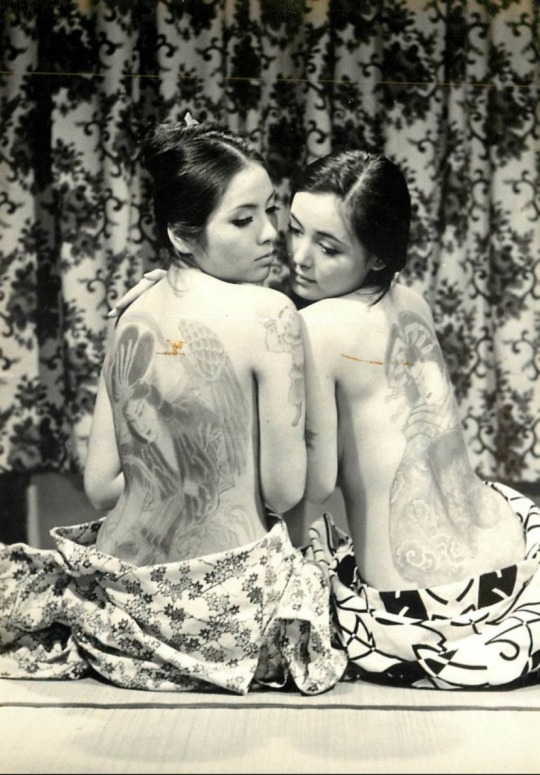
📷 Press photo for Tattooed Temptress (Irezumi Muzan, いれずみ無残), 1968, directed by Hideo Sekigawa (関川秀雄) and starring Chizuko Arai (荒井千津子) and Kikko Matsuoka (松岡きっこ).
11 notes
·
View notes
Text
Inéditos, Clássico "Hiroshima", Patrick Wang, Chantal Akerman e mto mais, em Abril na Filmicca (strreaming de arte)Inéditos, Clássico "Hiroshima", Patrick Wang, Chantal Akerman e mto mais, em Abril na Filmicca (strreaming de arte)
Inéditos, Clássico “Hiroshima”, Patrick Wang, Chantal Akerman e mto mais, em Abril na Filmicca (strreaming de arte)Inéditos, Clássico “Hiroshima”, Patrick Wang, Chantal Akerman e mto mais, em Abril na Filmicca (strreaming de arte)
LANÇAMENTOS INÉDITOS, FILMES PREMIADOS E O CINEMA DE PATRICK WANG E DE CHANTAL AKERMAN SÃO ALGUMAS NOVIDADES DE ABRIL DA FILMICCA
** OS CLÁSSICOS “HIROSHIMA”, DE HIDEO SEKIGAWA (1953) E “DORMIR ASSIM COMO SONHAR”, DE KAIZO HAYASHI (1986), EM VERSÕES RESTAURADAS, TAMBÉM ESTÃO NA PROGRAMAÇÃO DO MÊS.
A FILMICCA, plataforma de streaming nacional de cinema de arte mundial, anuncia a programação de…
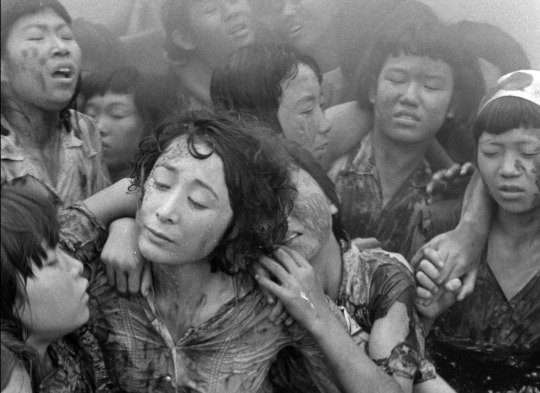
View On WordPress
0 notes
Photo
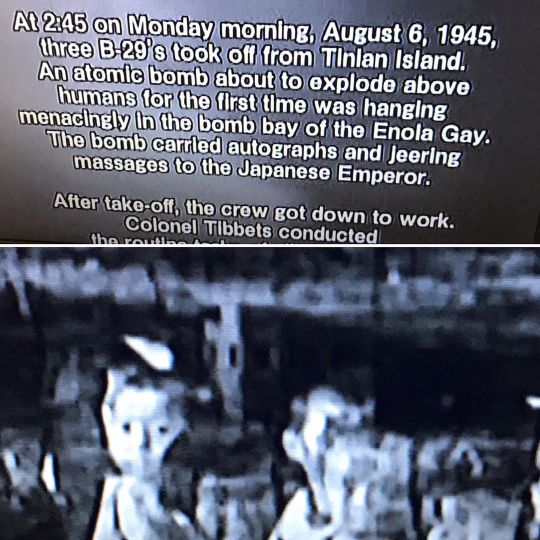
Shaken by the movie, Hiroshima, directed by Hideo Sekigawa. It was a huge production in 1953 with 90,000, some were Hiroshima survivors performing as extras. It was only eight years after an atomic bomb was dropped on Hiroshima, on August 6, 1945. The film was based on a collection of writings by girls and boys who were affected by the bomb. The bomb killed about 140,000 children and adults in 1945, about half died in the first day. In the following years, more people would suffer from radiation poisoning and develop leukemia and other cancers. https://www.instagram.com/p/CCkXr_KBw99/?igshid=1q5au12wgrfab
0 notes
Text
Inéditos, Clássico "Hiroshima", Patrick Wang, Chantal Akerman e mto mais, em Abril na Filmicca (strreaming de arte)
Inéditos, Clássico “Hiroshima”, Patrick Wang, Chantal Akerman e mto mais, em Abril na Filmicca (strreaming de arte)
LANÇAMENTOS INÉDITOS, FILMES PREMIADOS E O CINEMA DE PATRICK WANG E DE CHANTAL AKERMAN SÃO ALGUMAS NOVIDADES DE ABRIL DA FILMICCA
** OS CLÁSSICOS “HIROSHIMA”, DE HIDEO SEKIGAWA (1953) E “DORMIR ASSIM COMO SONHAR”, DE KAIZO HAYASHI (1986), EM VERSÕES RESTAURADAS, TAMBÉM ESTÃO NA PROGRAMAÇÃO DO MÊS.
A FILMICCA, plataforma de streaming nacional de cinema de arte mundial, anuncia a programação de…

View On WordPress
0 notes
Video
youtube
ひろしま - Hiroshima (1953)
( Directed by Hideo Sekigawa) The film shows the bombing of Hiroshima and the horrific aftermath following the detonation of an atomic bomb on humans for the first time in history.
関川秀雄監督による日本映画である。1955年に第5回ベルリン国際映画祭長編映画賞を受賞した
A Japanese boy's life is irrevocably changed after the atomic bomb levels his city.
1 note
·
View note
